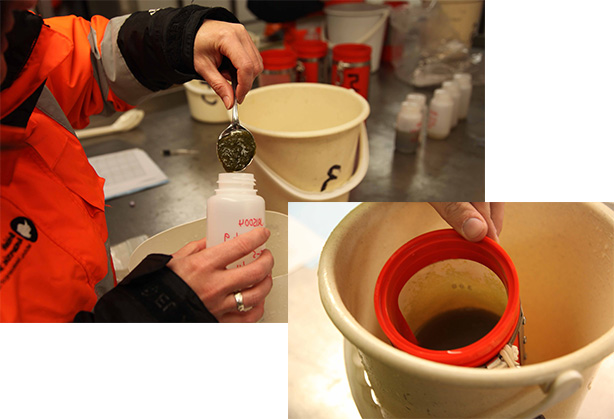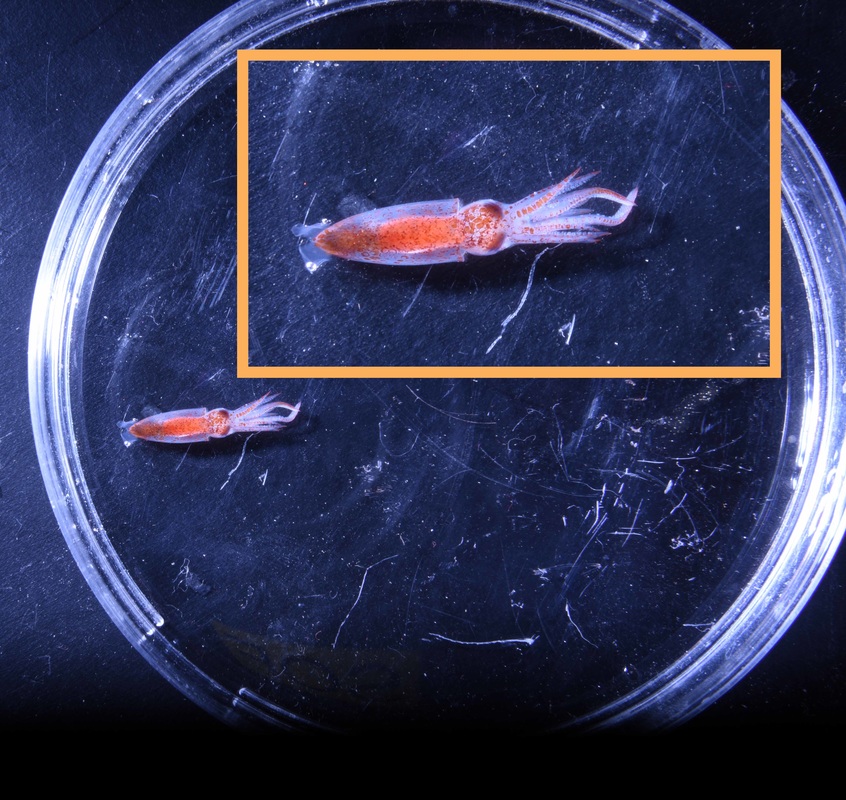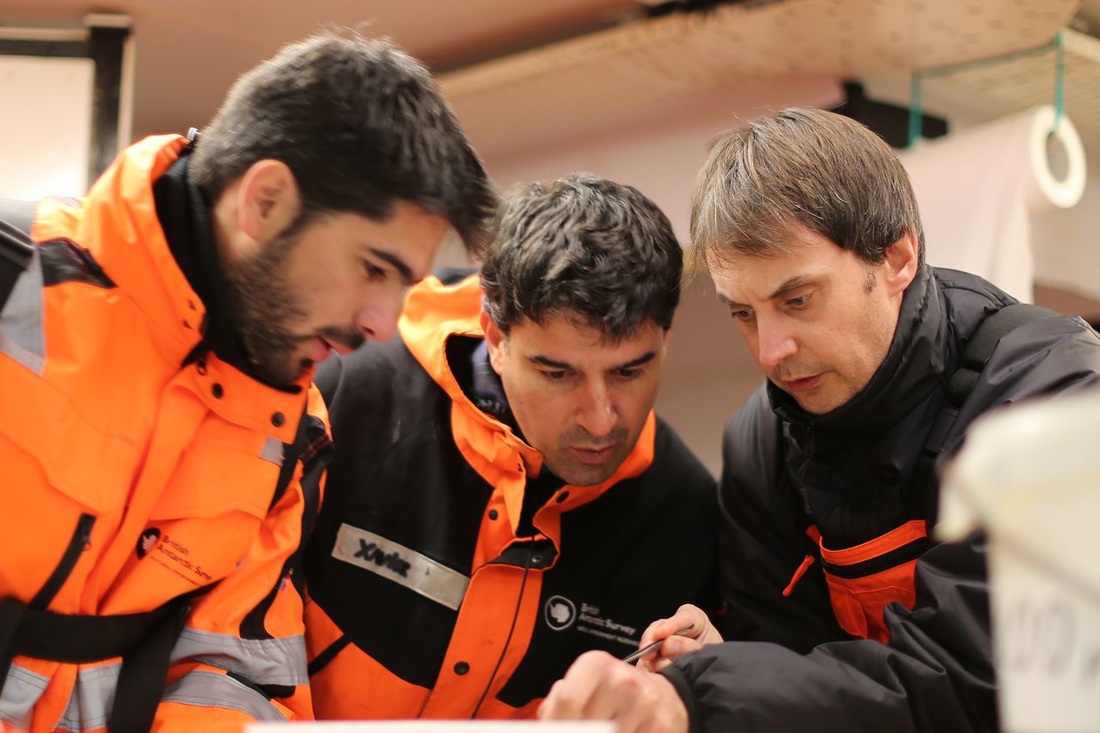|
José Xavier e José Seco A cadeia alimentar marinha no Oceano Antártico é conhecida por ser geralmente considerada pequena. Isto porque em 3 níveis tróficos (microalgas - Camarão do Antártico – Baleias) a energia da produção primária (microalgas) poderá ser rapidamente transferida para o topo da cadeia alimentar (Baleias). The Antarctic marine food web is generally known to be small. With only 3 trophic levels (microalgae – Antarctic krill – whales), the energy of primary production (microalgae) could be easily transfered up to the top of the food web quickly. No entanto, esta noção tem sido questionada, pois poderá ser mais complexa. Nos anos quando o camarão do Antártico não é abundante, o papel de peixe mictofideos parece aumentar, fazendo com que as microalgas sejam consumidas por zooplâncton (que não camarão do Antártico, como por exemplo copépodes), e estes por peixes e lulas, que serão presas para os predadores de topo (incluindo Baleias, focas e pinguins). Nos nossos estudos temos vindo a identificar que estas mudanças na cadeia alimentar marinha pode estar associada às alterações climáticas, com anos “bons” (com condições favoráveis) com muito camarão do Antártico, e anos “maus” (com condições desfavoráveis, como águas mais quentes) com pouco camarão do Antártico. Para compreender melhor estes mecanismos, é preciso conhecer a biologia e a ecologia dos animais que vivem no Oceano Antártico. Nestes dias apanhámos, com as redes MAMOTH e RMT8, larvas de camarão do Antártico, mas também lulas e peixes. However, this view has been questioned recently, as there is evidence that such 3 trophic levels could hide a more complex food web interactions. In some years, when the Antarctic krill is not abundant, the role of myctophid fish seems to increase, with phytoplankton being consumed by zooplankton (excluding Antarctic krill), such as copepods, and these be consumed by squid and fish. These would be eaten by top predators (including whales, penguins and seals). In our studies, we already identified that these changes in the marine food web could be attributed to climate change, with “good years” (with favourable conditions) with abundant Antarctic krill, and “bad years” (with unfourable conditions, e.g. more warm waters that usual) with little Antarctic krill. To learn more about the ecology of Antarctic marine organisms, it is essential to catch them. During these past days, using the MAMOTH and RMT8 nets, we have found Antarctic krill larvae, fish, squid, between many others. Estamos agora numa fase mais intensiva do cruzeiro científico com um programa intensivo de amostragem, com a rede maior (RMT25). Excitante, não?
We are in a very intensive phase of the research cruise, in which we will be using the biggest net onboard (RMT25)... we are getting excited! Os comentários estão fechados.
|
BLOGS DAS CAMPANHAS
|



 Feed RSS
Feed RSS
